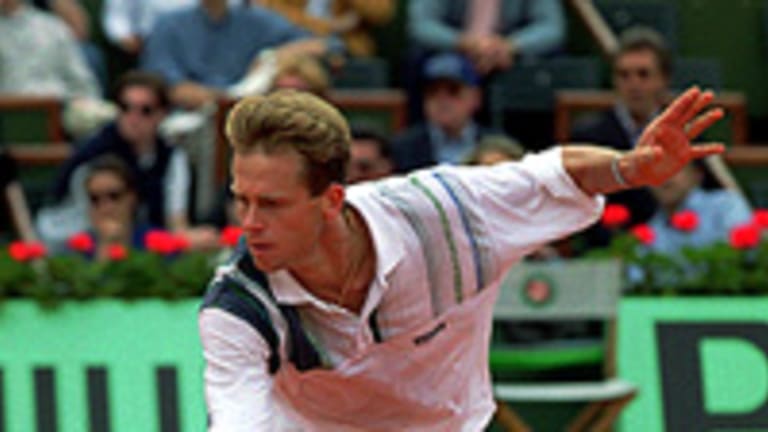I had a good time cruising through the DIY Champion Comments, although I regret having not thought it through for a little longer before posting. This blogging certainly is a "Feed the Beast" enterprise, and I always feel like I'm behind when I can't just focus on the tennis in front of my eyes, as I do when posting from a tournament site. For instance, I should have had a lob category, and certainly service return, too.
I think MWC created the Frankenplayer most capable of beating Federer on the surface of TMF's choice. I admit this is partly because MWC's composite had a reasonable dose of old-school players. One of the cruelest things about tennis is how fast we forget. It's amazing, the degree to which today's icon is tomorrow's "Oh, him! Remind me again, what did he accomplish?" geezer. It's the payback, I suppose, in a sport so based on immediate results. It's not that there's anything wrong with the "who's great now?" approach; it's just that in an age - and sport - in which superlatives are distributed so freely, we tend to de-value the past in direct proportion to the degree to which we worship the present.
In my own time as a journalist, I've heard the GOAT label applied - even if it was just as a question, as in, "Is so-and-so the Greatest of All-time?" - to at least five male players: Jimmy Connors, John McEnroe, Bjorn Borg, Pete Sampras, Roger Federer. Every generation seems to have its GOAT candidate, but who thinks back to the 1970s (Rod Laver, Roy Emerson, et al), the 1960s (Pancho Gonzalez), the 1950s (Jack Kramer), etc.? So I like it when someone hat-tips players whom few, if any, TW readers have actually seen in action And on this subject, seeing truly is believing.
Here's my own composite, Frankenplayer, then, with commentary:
Legs, footwork - Bjorn Borg. The guy couldn't volley, but served-and-volleyed with astonishing success at Wimbledon. This is a tribute to his amazing nimbleness, because anyone who saw him volley on grass knows that it was strictly wing-and-a-prayer material. Oddly enough, the "dead" nature of grass actually made his feeble volleys highly effective. Rafael Nadal, Lleyton Hewitt and Marcos Baghdatis show how much of a factor foot speed and court coverage can be, but Borg was the equal of any of them.
Mid-section, torso - Andre Agassi. Anybody who can get so much out his trunk when returning serve (he barely used a backswing) has got some amazing co-ordination. Runner-up: Miloslav Mecir, who had a long, long torso and used it exceptionally well.
Height- I'll take Marat Safin. In his U.S. Open win over Pete Sampras in 2000, he showed what the combination of height, shot placement and pace can achieve. It was the best example I've ever seen of tight, economical tennis - the ultimate marriage of form and function, considerably abetted by his height and reach.
